Apart from our physical and mental health, headaches and migraines can impact our social and occupational well-being, too. Individuals who suffer from chronic migraines have been shown to have less annual income, on average, when compared to non-migraine sufferers. (2) They also have been shown to have decreased levels of social engagement and time performing leisure activities. So, chronic headaches and migraines decrease our ability to perform work-related tasks, and can begin to tear away at our social relationships.

Myofascial tightness or tension: When the muscles and fascial tissue of our bodies are tense or tight, we are at an increased risk for developing headaches or migraines. You may have heard or even have used the term “tension headache.” Tension or tightness in the muscles of the upper back, neck, and face are key players in triggering headaches and migraines.
Stress: High levels of stress of any kind can kick off a headache or migraine.
Drinks: Drinks with high amounts of caffeine can trigger headaches and migraines. Consuming alcohol, especially wine, can also be a trigger.
Foods: Consuming foods that you may have an allergy or intolerance to can trigger headaches or migraines. Additionally, highly processed foods, fermented or aged foods, and salty foods can also be triggers.
Weather: Weather changes can bring changes in barometric pressure. If you notice your headaches or migraines seem to onset near a change in the weather, this may be a trigger for you.
Sleep: Changes in sleep patterns can cause the onset of headaches or migraines. This is often true for individuals who are getting too much sleep or too little sleep.
Sensory stimuli: Bright, flashing lights, such as strobe lights, can cause migraines in some individuals. Loud sounds or strong smells can also be triggers.
Hormone changes: Fluctuations in hormone levels can trigger headaches or migraines. This is especially true for women. Changes in hormone levels during a menstrual cycle, pregnancy, and menopause can make headaches and migraines more likely.

When our fascial health is compromised, it can become tight or restricted. This is often described as the fascia becoming “bound down”, or adhered to the structures it is surrounding. Tight or restricted fascia can cause changes in the mobility and stability of our bodies. When our fascia is restricted, we may notice decreases in our range of motion, muscle knots, restricted blood flow, and numbness and/or tingling. We are likely to experience pain as well.
You may be wondering how fascia can become tight or restricted. Fascia can become “bound down” in multiple ways. Examples of physical factors that can contribute to restricted fascia include trauma, such as injury or surgery, poor posture, and inflammation. Mental factors, such as emotional trauma, can show up in the body as tightened fascial tissue as well. Stress, for example, can actually be embodied as adhered fascia.
Restricted fascia has implications for headaches and migraines. For example, when the fascia of our neck becomes restricted, it begins to pull on the fascia of surrounding areas. This includes the fascia surrounding our skull and brain. Overtime, the fascia in these regions also becomes restricted. As the fascia of our skull and brain continue to bind down, they start to compress our brain and nervous system tissue. This compression can increase the pressure on the brain, resulting in headaches and migraines. This is why relieving restricted fascia with MFR therapy can help bring relief to those suffering headaches and migraines.
The prolonged, sustained pressure and stretch of MFR treatments are purposeful and intentional. It is what allows the piezoelectric effect to occur. (4) The piezoelectric effect is a chemical and electrical shift that occurs in the cells of the restricted fascial tissue.

The pressure applied by the MFR therapist causes a chemical reaction to occur in the tissue. This reaction is then converted by our cells into electrical charges. These charges have many benefits including pain relief, cellular regeneration, and tissue repair. Harnessing the piezoelectric effect is just one way MFR treatments differ from traditional massage therapy or other therapeutic modalities. It allows MFR treatments to enhance patient healing far more than other approaches of care.
MFR therapists use a slow and deliberate approach in their treatment sessions. This allows them to better sense and respond to the needs of their patients. This ability to sense the needs of patients is sometimes referred to as “resonance”, or the blending of the practitioner and patients’ energies. According to John F. Barnes, the leading expert in the field of MFR, this resonant state is where true healing occurs. By tapping into resonance, an MFR therapist can sense and follow the fascia as it releases. This process is similar to ice unthawing – the fascia moves from a solid state back to one that is fluid, relaxed, and wavy. Working in this way gives the therapist access to the deepest levels of restriction. And, it provides the opportunity to heal the root cause of any pain or discomfort.
Releasing tension: As mentioned above, musculoskeletal tightness or tension is one of the most common triggers for headaches and migraines. An MFR therapist will help relieve tension by restoring mobility to your fascial tissue. And by releasing restricted fascia, MFR therapists can assist in relieving headaches and migraines down to a cellular level.

Restoring posture and alignment: Poor posture and misalignment can contribute to muscle imbalances and fascial tension. Overtime, these imbalances can lead to headaches and migraines. Myofascial release aims to correct these imbalances by releasing any restrictions and improving the alignment of the spine, neck, and shoulders. By addressing the underlying structural issues that poor posture and alignment can bring, MFR therapy can help prevent the recurrence of headaches and migraines in the future.
Stress reduction: In addition to releasing fascial restrictions that may be contributing to headaches or migraines, MFR therapy also assists in stress reduction. This means MFR therapy will help you address not one, but multiple triggers for headache and migraine recurrence. There are many ways in which MFR therapy helps relieve stress. The hands-on approach of MFR care stimulates relaxation and helps improve our circulation. MFR therapy also impacts our vagus nerve, which plays a very important role in the body’s relaxation response.
Holistic approach: Instead of focusing only on your symptoms, MFR therapists hold a holistic perspective of your health and wellness. They recognize the variety of triggers that could cause a headache or migraine. And, they are aware of the variety of ways chronic headaches or migraines could be impacting your day-to-day life. Although their treatments primarily address the musculoskeletal system, MFR therapists can help you restore balance to your overall well-being.
Personalized care: Every individual’s experience with headaches and migraines is unique. And, their treatment for them should be as well. MFR therapists tailor their treatment to suit each patient’s specific needs. This personalized approach helps to ensure you are receiving the care you need. And, that the care you are receiving produces effective and long-lasting results.

The effect and impact of chronic headaches and migraines are many. From your physical health, your mental wellness, to your job and social relationships – chronic headaches and migraines leave no area of your life untouched. MFR therapy offers a promising avenue for those seeking relief from the far-reaching effects of headaches and migraines. MFR treatments are holistic, non-invasive, and personalized to ensure you are getting the care you are needing and deserving of. And, by addressing the root cause of your headaches or migraines, MFR treatments can help you find relief that is long-lasting. If you’re struggling with chronic headaches or migraines, consider finding a certified MFR therapist near you today to begin your MFR journey.
References:
- Rezaeian, T., Ahmadi, M., Mosallanezhad, Z., & Nourbakhsh, M. R. (2021). The impact of myofascial release and stretching techniques on the clinical outcomes of migraine headache: A randomized controlled trial. Journal of research in medical sciences : the official journal of Isfahan University of Medical Sciences, 26, 45. https://doi.org/10.4103/jrms.JRMS_745_18
- Adams, A. M., Serrano, D., Buse, D. C., Reed, M. L., Marske, V., Fanning, K. M., & Lipton, R. B. (2015). The impact of chronic migraine: The Chronic Migraine Epidemiology and Outcomes (CaMEO) Study methods and baseline results. Cephalalgia : an international journal of headache, 35(7), 563–578. https://doi.org/10.1177/0333102414552532
- Juett, T & Barnes, J. F. (1988). An introduction for the patient. https://myofascialrelease.com/downloads/articles/AnIntroductionForThePatient.pdf
- Elliott, J. (2003). Easing pain with myofascial release. News-line for Physical Therapists & PT-Assistants. https://myofascialrelease.com/downloads/articles/EasingPainWithMyofascialRelease.pdf

